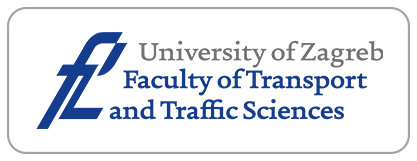Optimization of Parking Public Transport Vehicles in Ostrava

Downloads
A typical trait of public transport is a spatially scattered demand. A route net that is operated by a carrier (or several carriers) has to be adapted to the demand. Public transport vehicles that are not used during a period of a day are usually parked in defined parking lots that have a given capacity. When the vehicle goes from the place where its schedule ends (usually a terminus of the last connection served by the vehicle) to the place where the vehicle should be parked, a non-productive journey occurs. The same occurs at the beginning of the vehicle schedule as well. The main goal of the paper is to present a mathematical model that enables minimization of the total length of all the non-productive journeys. Functionality of the proposed mathematical model was tested in the conditions of a real bus public transport network.
Downloads
Borndoerfer R, Groetschel M, Pfetsch ME. A Column-generation Approach to Line Planning in Public Transport. Transportation Science. 2007;41(2):123-132.
Bussieck MR, Kreuzer P, Zimmermann UT. Optimal Lines for Railway System. European Journal of Operation Research. 1997;96(1):54-63.
Černá A, Černý J. Erlander Principle in Managerial Decision Making on Czech and Slovak Urban Transport Routes. E + M Ekonomie a management. 2013;16(1):93-100.
Černý J, Kluvánek P. Introduction to Mathematical Transport Theory [in Slovak]. Bratislava: VEDA; 1990.
Dellólio L, Ibeas A, Ruisánches F. Optimizing Bus-size and Headway in Transit Networks. Transportation. 2012;39(2):449-464.
Erlander S, Schéele S. A Mathematical Programming Model for Bus Traffic in a Network. Proceedings of the International Symposium Transportation and Traffic Theory.Vol VI; 1974 August 26-28; Sydney, Australia.
Gass SI. Linear Programming-Methods and Applications. New York: Dover Publications; 2003.
Hitchcock FL. The distribution of a product from several sources to numerous localities. Journal of Mathematics and Physics. 1941;20:224-230.
Janáček J, Buzna Ľ. Optimization in Networks. Žilina: Univerzity of Žilina; 2009.
Janáček J, Širc J. The Column Generation Technique for Public Transport Line Planning by IP Solver. Komunikacie. 2010;12(3):60-64.
Koháni M. Exact Approach to the Tariff Zones Design Problem in Public Transport. Proceedings of the International Conference Mathematical Methods in Economics 2012. Vol XXX; 2012 September 11-13; Karviná,Czech Republic.
Kozel P. The Time Coordination of Bus Links in Both Transport Directions. Proceedings of the 29th International Conference on Mathematical Methods in Economics 2011; 2011 September 6-9; Janská dolina, Slovakia.
Ludvík M. Allocation of Vehicle Optimization [in Czech].Diploma thesis: VŠB – Technical University of Ostrava; 2010.
Palúch S, et al. Direction for Software Communication Automated System for the Scheduling Vehicles - KASTOR [in Slovak]. Žilina: Transport Research Institut; 1984.
Palúch S. Two Approaches to Vehicle and Crew Scheduling in Urban and Regional Bus Transport. Proceedings of the International Conference Quantitative Methods in Economics (Multiple Criteria Decision Making XIV). Vol. XIV; 2008 June 5-7;High Tatras, Slovakia.
Palúch S. A Vehicle Scheduling Algorithm Based on Vertex Covering by a Set of Disjoint Paths. Proceedings of International Conference Mathematical Methods in Economics 2010. Vol XXVIII; 2010 September 8-10; České Budějovice, Czech Republic.
Peško Š. Flexible Bus Scheduling with Overlapping Trips. Proceedings of the International Conference Quantitative Methods in Economics (Multiple Criteria Decision Making XIV). Vol XIV; 2008 June 5-7;High Tatras, Slovakia.
Teichmann D, Dorda M, Frič J. An Extended Model for the Design of City Mass Transport Network. Proceedings of the 29thInternational Conference on Mathematical Methods in Economics 2011; 2011 September 6-9; Janská dolina, Slovakia.
Teichmann D, Dorda M, Olivková I. Optimal assignment of vehicles to urban transport routes. Komunikacie. 2013;15(1):34-38.
www.fico.com




















